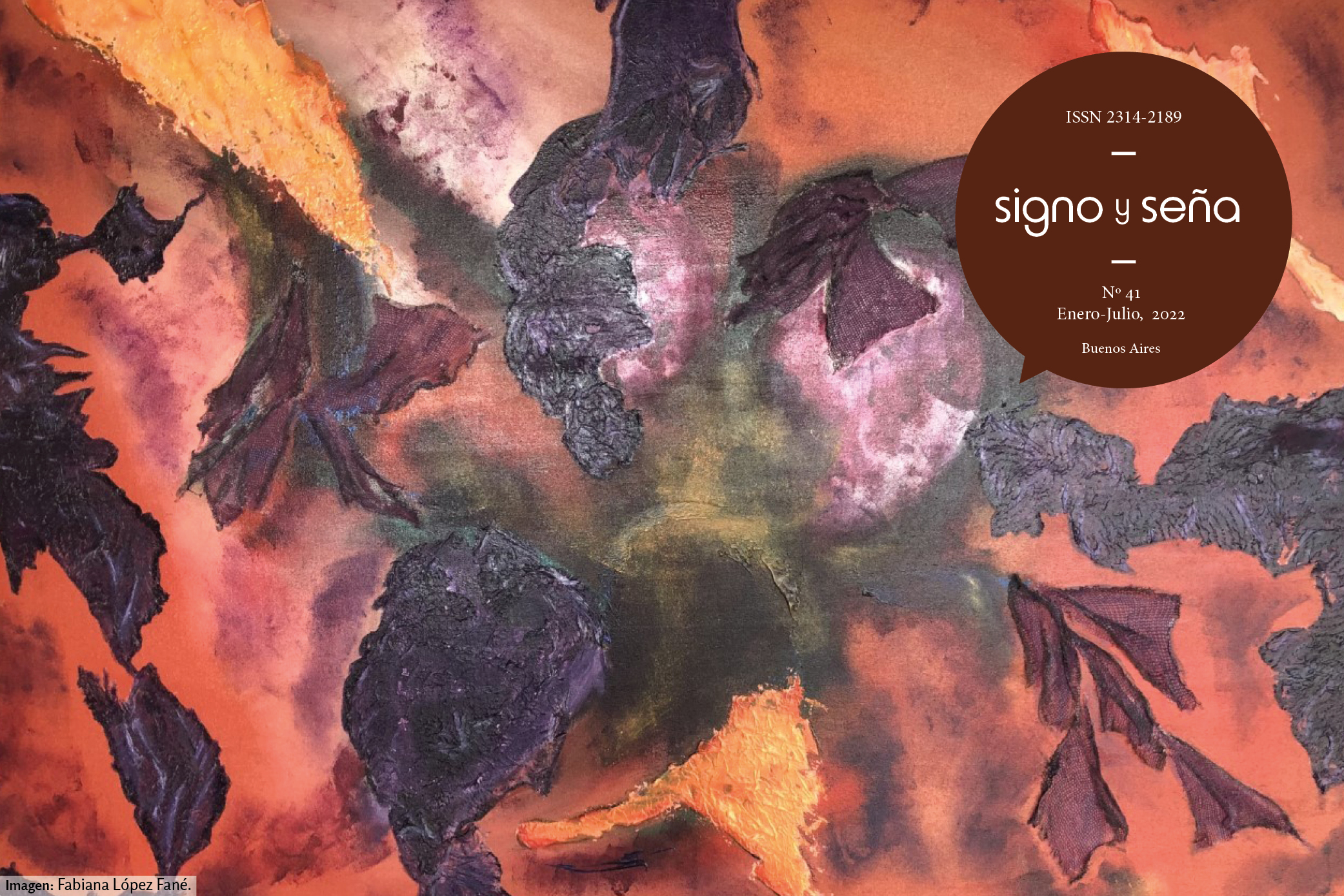The Stage directions as indicators of the causes of dramatic enunciation
Keywords:
stage directions, replica, dramatic text, polyphony, dialogism
Abstract
Stage directions are one of the most studied components of the dramatic text. However, there is currently no consensus regarding the linguistic attributes of these statements or their role in the meaning construction process. By using as framework the Dialogic Approach to Argumentation and Polyphony (Caldiz 2019; García Negroni 2019; 2021; García Negroni y Libenson 2018), this paper studies the semantic nature of the didascalias particulares (expressions written in brackets and attached to the character´s dialogue). In particular, this work analyzes those cases in which stage directions are involve in the display of causal indications: the instructions that every statement has about the reasons for its irruption. In order to explain their enunciative function, a group of stage directions from different theatrical aesthetics is taken as corpus (Albee [1962] 2000; Arlt [1938] 1993; Beckett [1952] 2013; Camus [1944] 2004; Casona [1943] 1985 y Miller [1949] 2013). It is intended to show that didascalias particulares on some occasions urge to recover a dialogic frame that is presented as the cause that triggers the enunciation of the character and justifies the properties that it has.Downloads
Download data is not yet available.
Published
2022-10-13
How to Cite
Zucchi, M. (2022). The Stage directions as indicators of the causes of dramatic enunciation. Signo & Seña, (41). https://doi.org/10.34096/sys.n41.10913
Section
Articles
- Authors keep the copyright and give the journal the right of the first publication, with the work registered with the Creative Commons Attribution-ShareAlike 4.0 International License, which allows third parties to use what is published whenever they mention the authorship of the work and the first publication in this magazine.
- Authors can make other independent and additional contractual agreements for the non-exclusive distribution of the article published in this journal (eg, include it in an institutional repository or publish it in a book) as long as they clearly indicate that the work It was published for the first time in this magazine.
- Authors are allowed and recommended to publish their work on the Internet (for example on institutional or personal pages).

















